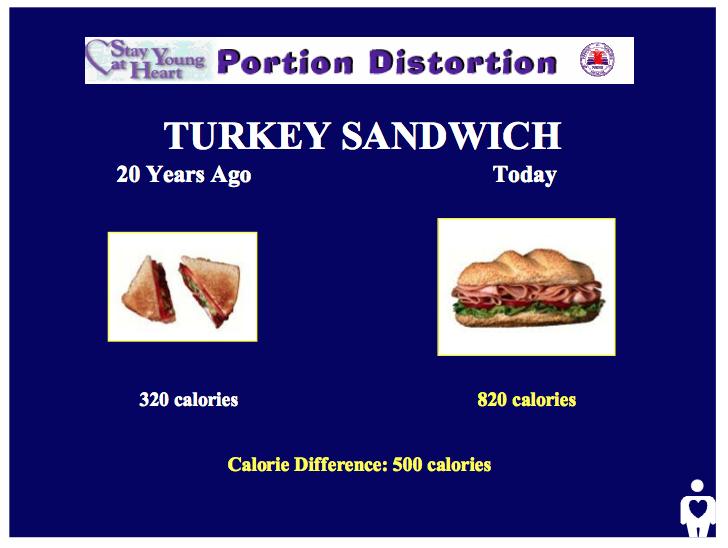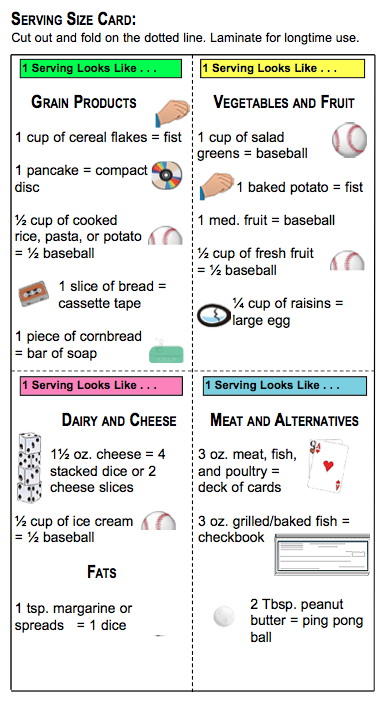Over the past 20 years, as restaurants and food processors have competed to give you more for your money, portion sizes have dramatically increased. What began as a single-serving snack or drink now contains two or three servings. Studies show that we unintentionally eat more when faced with larger portions, so along with these oversized portions comes oversized waistlines.
What’s a Portion Size vs. a Serving Size?
A portion is the amount of a single food item you choose to eat during a single meal or snack.
A serving is a measured amount of food–such as a cup or an ounce–used on the Nutrition Facts labels of packaged foods.
For example, bagels or muffins are often sold in portion sizes that constitute at least 2 servings. We often eat the whole portion, thinking that we have eaten a healthy amount, when in fact, we’ve overeaten.
What is a Standard Serving Size?
Standard serving sizes differ by type of food. One way to get a feel for serving sizes is to measure a fixed amount of some of your favorite foods and drinks to see what they look like in your plates and glasses. For example, measure 8 ounces of juice to see what this amount of liquid looks like in your favorite glass. The National Institutes of Health also provides a serving size wallet card that can help you estimate serving sizes.
Avoiding Common Portion-Size Pitfalls
- When Eating Out: Split an entrée with a friend or ask the waiter for a “to-go” box and wrap up half your meal as soon as it’s brought to your table.
- When Eating In: Serve portions on individual plates, instead of putting the serving dishes on the table. You can also try using smaller plates and bowls, which make small portions look larger.
- When Snacking in Front of the TV: Don’t eat directly from the package. Put a reasonable amount into a bowl and leave the rest of the package in the kitchen.
- When Counting Calories: It’s easy to check the calories on a food label without noticing the serving size the calories are based on. Don’t assume the calories equate to what is packaged as an individual portion.
Source: How to Avoid Portion Size Pitfalls to Help Manage Your Weight, Center for Disease Control and Prevention, http://www.cdc.gov/healthyweight/healthy_eating/portion_size.html
By Sue Gonzalez, Master Food Volunteer


